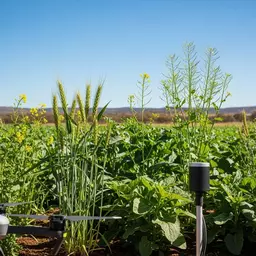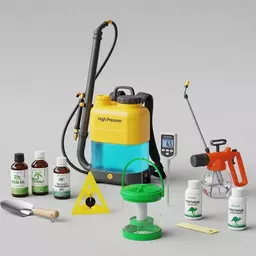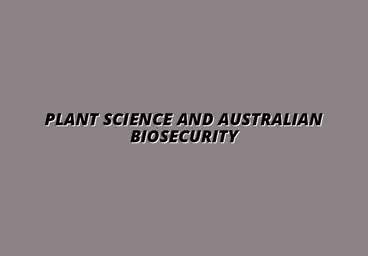Pest Management Resources in Australia

As we navigate the complexities of pest management, one may ponder: how can we effectively safeguard Australia’s unique ecosystems while ensuring agricultural resilience? This article delves into the multifaceted world of pest management, highlighting sustainable strategies that can address this pressing challenge.
What You Will Learn
- Understanding the diverse challenges of pest management in Australia is crucial for developing effective strategies.
- Integrated Pest Management (IPM) combines various methods to sustainably manage pest populations and reduce chemical reliance.
- Collaboration among organizations, researchers, and local communities enhances the effectiveness of pest management practices.
- Continuous learning and adaptation are essential to keep pace with evolving pest behaviors influenced by climate change.
Australian Pest Management Strategies
This visual summarizes key strategic approaches, essential organizations, and collaborative initiatives driving effective pest management in Australia. For a deeper dive into specific methodologies, explore sustainable pest control in Australia.
Key Strategic Approaches
- ✓ Integrated Pest Management (IPM)
- ✓ Continuous Monitoring
- ✓ Community Collaboration
Key Influencing Organizations
- ● Australian Pesticides and Veterinary Medicines Authority (APVMA)
- ● CSIRO (Commonwealth Scientific and Industrial Research Organisation)
- ● State Departments of Agriculture
Continuous Learning Elements
- ■ Staying Updated on Research
- ■ Participating in Workshops and Training
- ■ Feedback Mechanisms
Collaborative Initiatives
- ★ The University of Queensland
- ★ CSIRO (Australia’s National Science Agency)
- ★ Farmers' Associations
Understanding the Landscape of Australian Pest Management
In Australia, pest management is a critical aspect of safeguarding our agricultural systems and natural ecosystems. The diverse climate and varied landscapes create unique challenges for managing pests effectively. Understanding how these factors influence pest behavior is key to developing successful strategies that can protect our crops and native flora.

At Plant Frontier Insights, we believe that effective pest management goes beyond simply addressing symptoms; it requires a comprehensive understanding of the entire ecosystem. By recognizing the intricate interactions among pests, plants, and environmental factors, we can implement more targeted and sustainable solutions.
Defining Pest Management in the Australian Context
Pest management in Australia encompasses a wide range of practices aimed at minimizing the damage caused by pests to agriculture and the environment. It involves a combination of prevention, monitoring, and control strategies tailored to specific pest species and the local environment.
- Preventive Measures: Implementing practices that reduce the likelihood of pest infestations.
- Monitoring Techniques: Regularly assessing pest populations to make informed management decisions.
- Control Strategies: Utilizing various methods, including cultural, biological, and chemical controls, to manage pest populations.
In the Australian context, where biodiversity is rich yet fragile, integrating these practices into a cohesive strategy is essential. This approach ensures that we not only address immediate pest issues but also consider long-term ecological health.
Importance of Integrated Pest Management (IPM) Strategies
Integrated Pest Management (IPM) is a cornerstone of modern pest control in Australia. It emphasizes the use of multiple strategies that work together to manage pest populations sustainably. With IPM, we can significantly reduce reliance on chemical pesticides, thus benefiting both the environment and human health.
- Reduced Chemical Use: By relying on biological and cultural methods, we can minimize chemical applications.
- Cost-Effective Solutions: IPM can lead to lower long-term management costs due to reduced chemical inputs and less crop damage.
- Enhanced Biodiversity: Maintaining healthy ecosystems through diverse pest management strategies encourages natural pest predators.
As we explore the implementation of IPM practices at Plant Frontier Insights, we recognize that education and community engagement are key to driving these strategies forward. Together, we can create a healthier agricultural landscape. For further insights into agricultural resilience, consider learning more about understanding biosecurity in Australia.
Key Organizations Influencing Pest Management Policies in Australia
Several organizations play crucial roles in shaping pest management policies and practices across Australia. These bodies provide resources, research, and guidance that influence both policy and on-the-ground practices.
- Australian Pesticides and Veterinary Medicines Authority (APVMA): Regulates the use of pesticides and veterinary medicines.
- CSIRO (Commonwealth Scientific and Industrial Research Organisation): Conducts vital research on pest behavior and management techniques.
- State Departments of Agriculture: Local organizations that provide support and resources tailored to specific regional challenges.
Collaboration among these organizations fosters a comprehensive approach to pest management, ensuring that practitioners have access to cutting-edge research and effective strategies. As we engage with these key players, we aim to facilitate knowledge sharing that enhances Australia’s agricultural resilience.
Pro Tip
When implementing Integrated Pest Management (IPM) strategies, consider the local biodiversity. Encouraging natural pest predators in your farming practices can significantly enhance pest control while reducing reliance on chemical pesticides. This approach not only benefits your crops but also promotes a healthier ecosystem.
Summarizing Key Insights for Researchers and Practitioners
As we reflect on the complexities of pest management within Australia, it's vital to consolidate our understanding of effective strategies. By examining key approaches, we can better equip researchers and practitioners to tackle the challenges faced in this field. Here’s a brief recap of the strategic approaches to pest management that have emerged:
- Integrated Pest Management (IPM): This holistic approach combines various pest control tactics tailored to specific situations.
- Continuous Monitoring: Regular assessments allow for timely interventions, minimizing pest impact.
- Community Collaboration: Engaging local stakeholders enhances knowledge sharing and promotes sustainable practices.
These principles not only guide our pest management efforts but also foster an environment of resilience and adaptability in agricultural practices across Australia. At Plant Frontier Insights, we believe that the collaboration between researchers and practitioners is crucial for developing innovative solutions.
Importance of Continuous Learning and Adaptation in Pest Control
The landscape of pest management is ever-evolving, and staying informed is essential. Continuous learning ensures that we can adapt to new challenges, especially as climate change influences pest behaviors. As someone invested in sustainable agricultural practices, I often find that the most successful pest management strategies are those that embrace innovation and flexibility.

Here are key elements of continuous learning in pest management:
- Staying Updated on Research: Keeping abreast of the latest studies helps practitioners apply new findings in real-world settings.
- Participating in Workshops and Training: These opportunities allow for hands-on experience and networking with other professionals.
- Feedback Mechanisms: Implementing systems to gather feedback from stakeholders can identify areas for improvement.
Ultimately, fostering a culture of continuous learning leads to enhanced pest control measures, providing greater security for Australia's agricultural future.
Research Institutions and Collaborative Initiatives in Pest Management
Collaboration among research institutions, universities, and governmental bodies plays a pivotal role in advancing pest management practices in Australia. By pooling resources and expertise, we can tackle pest issues more effectively. For example, partnerships between institutions and local farmers yield valuable insights that improve pest management strategies. For more information on cutting-edge developments, see plant science advances in Australia.
Some notable research institutions and initiatives include:
- The University of Queensland: Engages in extensive research on pest biology and management.
- CSIRO: Australia’s national science agency that conducts vital research on pest ecology.
- Farmers' Associations: These groups often collaborate on pest management projects that directly benefit local ecosystems.
At Plant Frontier Insights, we emphasize the importance of these collaborations, as they represent a collective effort to enhance our agricultural systems and ensure food security for the future.
Encouraging Collaborative Efforts in Pest Management
Engaging with Communities and Stakeholders for Better Outcomes
Community engagement is essential for the success of pest management strategies. By involving local stakeholders, we can create tailored approaches that reflect specific needs and challenges. This engagement not only fosters trust but also cultivates a greater sense of responsibility towards sustainable practices.
Here are effective ways to engage with communities:
- Hosting Informational Workshops: Providing education on pest management techniques empowers communities.
- Creating Advisory Panels: Involving farmers and residents in decision-making ensures diverse perspectives are considered.
- Developing Resource Materials: Accessible guides and online resources can enhance understanding and implementation of best practices.
By nurturing these relationships, we can collectively work towards more effective and sustainable pest management solutions.
Call to Action: Accessing Australian Pest Management Resources
As I conclude this section, I invite you to take an active role in enhancing our pest management practices across Australia. There are numerous resources available, from educational materials to training programs, that can support your efforts in this vital field.
To get started, consider exploring the following resources:
- Plant Frontier Insights: Your go-to hub for the latest research and case studies.
- Local Agricultural Extension Offices: These offices offer tailored advice and support to farmers in pest management.
- Online Courses and Webinars: Engaging in these platforms can expand your knowledge and skills.
Let’s work together to advance our understanding and application of pest management strategies, ensuring a resilient agricultural future for Australia!
Frequently Asked Questions About Australian Pest Management
What is Integrated Pest Management (IPM) and why is it important in Australia?
Integrated Pest Management (IPM) is a comprehensive strategy that combines various methods—such as biological, cultural, and chemical controls—to manage pest populations sustainably. It's crucial in Australia because it reduces reliance on chemical pesticides, benefiting biodiversity, human health, and long-term agricultural resilience while managing pest populations effectively.
Which organizations are key players in shaping pest management policies in Australia?
Key organizations include the Australian Pesticides and Veterinary Medicines Authority (APVMA), which regulates pesticide use; CSIRO (Commonwealth Scientific and Industrial Research Organisation), which conducts vital research; and State Departments of Agriculture, which provide regional support and resources.
How does continuous learning contribute to effective pest control?
Continuous learning is essential because the landscape of pest management is constantly evolving, especially with climate change impacting pest behaviors. Staying updated on research, participating in workshops, and utilizing feedback mechanisms allow for adaptation to new challenges and the implementation of innovative, flexible strategies.
Why is community engagement important for pest management strategies?
Community engagement is vital for successful pest management because it allows for tailored approaches that reflect specific local needs and challenges. It fosters trust, cultivates a sense of responsibility, and promotes sustainable practices through shared knowledge and collaboration among stakeholders, including farmers and residents.
What are some key strategic approaches to Australian pest management?
The key strategic approaches include Integrated Pest Management (IPM), which is a holistic approach; continuous monitoring to allow for timely interventions; and community collaboration, which enhances knowledge sharing and promotes sustainable practices across agricultural systems and ecosystems.
Recap of Key Points
Here is a quick recap of the important points discussed in the article:
- Integrated Pest Management (IPM): A holistic approach that combines various pest control tactics tailored to specific situations.
- Continuous Monitoring: Regular assessments allow for timely interventions, minimizing pest impact.
- Community Collaboration: Engaging local stakeholders enhances knowledge sharing and promotes sustainable practices.
- Preventive Measures: Implement practices to reduce the likelihood of pest infestations.
- Education and Engagement: Hosting workshops and creating resource materials empower communities in pest management.
Popular Posts
 As the agricultural landscape in Australia evolves, the role of genetic innovation tools becomes inc
As the agricultural landscape in Australia evolves, the role of genetic innovation tools becomes inc
 As the agricultural landscape in Australia faces mounting challenges, understanding effective crop p
As the agricultural landscape in Australia faces mounting challenges, understanding effective crop p
 As Australia faces growing agricultural challenges, the significance of biosecurity cannot be overst
As Australia faces growing agricultural challenges, the significance of biosecurity cannot be overst
 As we delve into the intricate world of biosecurity, consider this: the health of Australia’s ecos
As we delve into the intricate world of biosecurity, consider this: the health of Australia’s ecos
